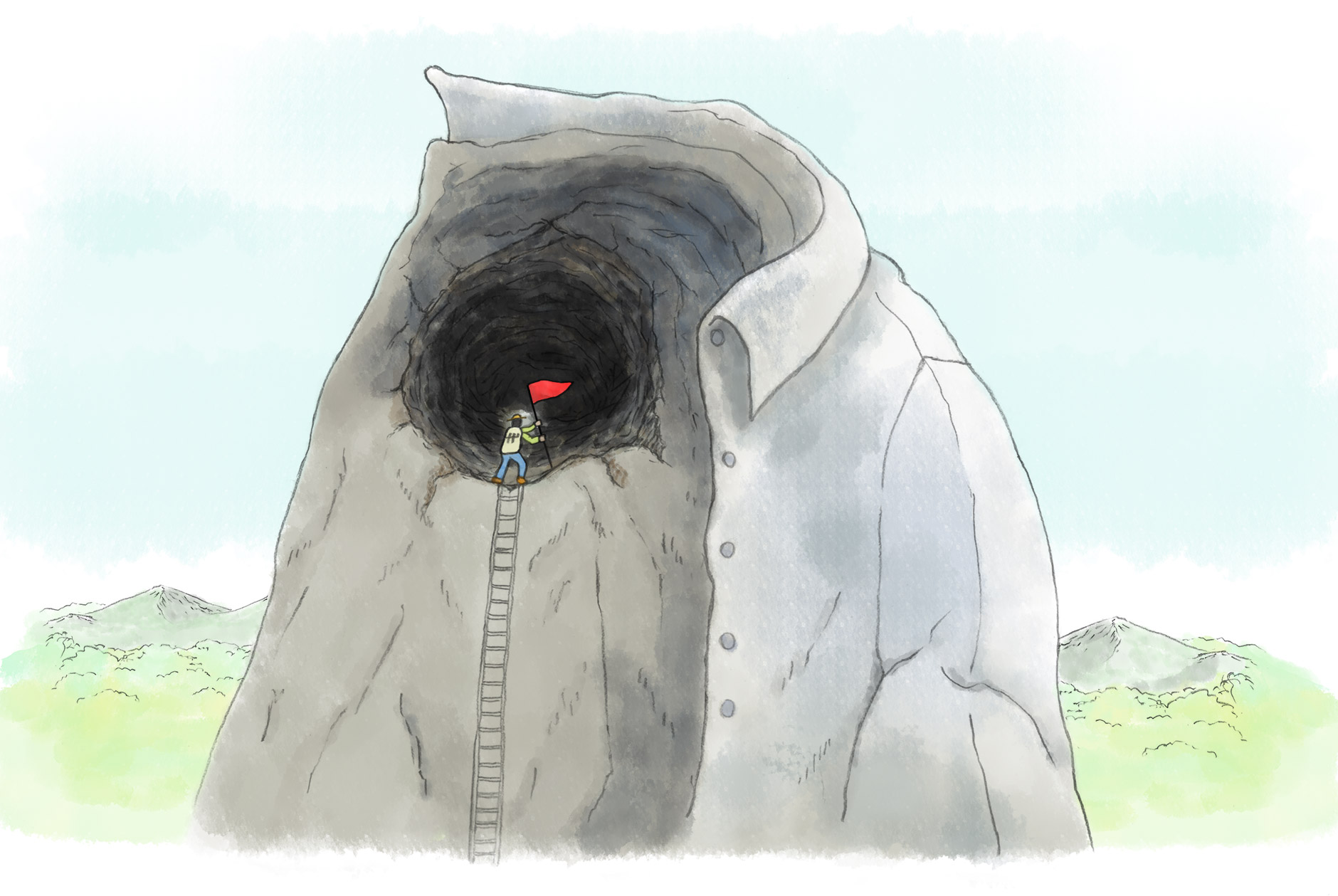Column: 02
Sleeve Tunnel
Can the arm make it through the darkness?
2019.08.16

Here in the Dementia World, there is a forbidding tunnel called the “Sleeve Tunnel.” You might think making it through the tunnel would be easy, but it is not. Sure, the tunnel is very short and doesn’t branch. Yet, the moment you stand at its entrance, you somehow lose your senses of direction and spatial orientation. You keep bumping into the walls of your clothes in your desperate efforts to reach the other side.
There are clothes that look similar at a glance, but depending on the number of buttons or the shape of the sleeves, some are easier to put on than others. When I was a child, these small differences often meant I put my buttons in the wrong holes or tried to force my head through my sleeve. In the end, if I could not dress myself properly, I had to ask my mother for help. As we grow up, I think we forget about the difficulties of getting dressed that we all experience as children.
I thought that I had long forgotten those difficulties, but lately, it seems I have been having trouble putting on clothes. At first, I thought I might have forgotten how to put them on, but I feel what I am experiencing is different from memory impairment.
To start, I reach out for an article of clothing on a hanger, but have difficulty grabbing it with my hand because I cannot judge the distance.*1 Then, when I finally have it in my hands, I do not know where to slip my arm in because I cannot make out the top, bottom, left, right, inside, or outside.*2 Next, if I manage to succeed in putting my arm in the sleeve, it might get stuck in the middle, leaving me at a loss as to which direction the arm should go from there.*3
I feel as though I am trapped in a maze.
Additionally, even if I manage to find the sleeve’s exit, I find I cannot move the arm in the direction I want.*4 I try again and again, but it is not easy. Putting something on might take me more than an hour. On days I have plans to go out, I get up really early to make sure I have enough time to get dressed.
Having struggled to get dressed day after day, I began to notice there are clothes that are easier for me to put on and others that I find more difficult.
First is the shape of the clothing. I have come to the conclusion that stiffer, “structured” clothes are easier to wear. When it comes to soft, flowy clothes, such as light cardigans, it is hard to tell their shapes when they are crumpled up. I do not know how to hold them and where to start putting them on because of this.
To make it a little easier to tell the shape of a crumpled piece of clothing, putting a mark at the back of its neck works well. If I hold it there and lift it up, I can at least tell it is not upside down. But, to be honest, it is much more helpful if all my clothes are laid out side by side with the arms spread out.
The material is also important. I have tried a variety of them, and found that light materials with smooth textures are easiest to wear. Because they do not cause friction on the skin, my arms can easily slide through the sleeves – if I manage to find the sleeve hole. When I try to wear clothes made of coarser fabrics, my arms can get stuck in the sleeves, even when I am lucky enough to find the sleeve hole. As soon as an arm gets stuck, I get confused and can no longer tell how to move it any farther through the sleeve.
To make it easier to find the sleeve hole and avoid getting lost inside a piece of clothing, I recommend that you put a piece of marking tape inside the sleeve opening. When taking it off, it is of course also important to keep it in a position that helps you pick it up easily the next time you want to put it on.
After trial and error, I now have a collection of favorite clothes in my closet that are easy to put on and let me enjoy getting dressed up.
Barrier:
When people with dementia enter the "Sleeve Tunnel",
the following 4 mental and physical dysfunctions might be at play.
Share
- 前へ
- 記事一覧へ
- 次へ

